
UZBEKISTAN
GOVERNMENT BACKS SUFISM
TO COUNTER WAHHABISM
In the wake of a visit between 15 and 20 May to the Uzbek city of Bukhara (500 kilometres or 300 miles west of Tashkent), the "capital" of the Sufi Naqshbandi order in Central Asia, Keston has learnt that currently the Uzbek authorities are not simply not opposing the spread of the Naqshbandi order but, on the contrary, are doing all they can to support it.
They are using Sufism as a distinctive counterweight to those Muslims who are independent of the authorities, the so-called Wahhabis (the name given in Central Asia to Islamic fundamentalist groups, which often have little in common with the Islam that predominates in Saudi Arabia) and the international Islamic party Hizb-ut-Tahrir, which campaigns for the unification of Muslims throughout the world into a single caliphate.
Bukhara is held to be the most significant Muslim holy site in Central Asia. It was in this city that Bahauddin Naqshbandi, founder of the Naqshbandi order, one of the most influential Sufi orders, was born in the 14th century.
Sufism is a mystical branch of Islam, rooted in the attempt to reach God through personal experience. The first Sufis are said to have been the ascetics who lived in Iraq and Syria at the end of the 8th century and the beginning of the 9th century, who strove to comprehend the "hidden" sense of the Koran's revelations, and who followed strictly the instructions of the Koran, held vigils, took vows, and observed additional fasts. The name of the movement is believed to derive from the Arabic word suf - meaning wool - as the Sufis wore cloaks made out of coarse wool.
From its origins in Bukhara, the Sufi Naqshbandi order (translated literally, an engraver of wooden stamps) now has followers in all the Muslim countries. During the war in the North Caucasus against Russian forces in the 19th century, it was members of the Naqshbandi order that made up the main part of the resistance movement. In 1940-42 an uprising against the Soviet authorities was also led by members of the Naqshbandi order. During the colonisation of Central Asia, Russian forces were also forced to confront not so much opposition from the local feudal lords, the state apparatus and the armies of local rulers, as resistance by members of the Sufi orders. Almost all the leaders of anti-Russian movements were Sufi sheikhs.
Now the official respect for Naqshbandi and his legacy is clear. In 1991 Bukhara's central street (called Lenin Street in the Soviet era) was renamed Bahauddin Naqshbandi street. In the Soviet era, Sheikh Naqshbandi's mausoleum (10 kilometres or 6 miles east of Bukhara) was used to store fertiliser. However, in 1991 the mausoleum was reopened and Naqshbandi's grave became a place of mass pilgrimage.
"In Soviet times it was even more dangerous to be a Sufi than simply to be a Muslim - the police got rid of such people right away," the imam-hatyb of the mosque next to Naqshbandi's mausoleum, Bobodzhon Rahmonov, told Keston on 16 May. "But now we do not have any problems with the state. For example, the chairman of the state committee for religious affairs, Fazil Sobirov, belongs to the Naqshbandi order.
Moreover, we are working with the state to show people how wrong the Wahhabi outlook is. We explain that the building of mausoleums in honour of holy Muslims - something the Wahhabis oppose - is not against Islam."
Teachers at Bukhara's Mir-Arab madrassah (the largest religious teaching establishment in Central Asia) expressed their full support for the state's policy towards believers. "'Sufism' is one way of reaching God. We have begun to teach Sufism as of this year as a separate subject," a teacher at the Mir-Arab madrassah, Abduhalil haji Niyazov, told Keston on 17 May. "Sixty hours in the year are allocated to the study of Sufism." In private conversations with Keston, students at the Mir-Arab madrassah reported that students suspected of supporting Hizb-ut-Tahrir were immediately expelled, while to profess Sufism was completely safe.
Significantly, the government is also trying to attract foreign Muslim communities in order to raise the authority of the Naqshbandi order in Uzbekistan. It maintains close contacts with the Islamic Supreme Council of America, which represents followers of the Naqshbandi order in the United States. The number of ISCA members is relatively small (in the tens of thousands), but Uzbek propaganda represents the ISCA as being one of the most influential Muslim organisations in the United States. ISCA leaders have visited Uzbekistan and have met President Islam Karimov, while the Uzbek government invited ISCA representatives to act as observers at the presidential elections in January 2000. The ISCA remarks on its web-site (www.Islamicsupremecouncil.org): "In January 2002, Islamic Supreme Council of America was honoured to have been the only American Muslim organisation to be invited to observe Uzbekistan's constitutional referendum. The invitation was a result of the ISCA's long-standing commitment to working with the moderate government of President Islam Karimov and supporting Uzbekistan's fight against religious extremism."
The government's support for followers of the Naqshbandi order may be explained by the fact that Sufism in Central Asia is quite closely linked with local, essentially pagan, customs. For example, one should only start with one's left foot when entering Naqshbandi's mausoleum. There are some shrivelled remains of a tree at the entrance to the mausoleum. According to folklore this tree grew when Bagauddin Naqshbandi was alive, and it is mystically linked with the founder of the order. It is said that if you walk three times around the shrivelled trunk of this tree, then your wish will be granted. The Uzbek government is primarily afraid of supporters of fundamentalist Islam, which has been imported from Arab countries and which calls for religion to be purified of regional and local customs. It therefore regards it as expedient that local Islam should be as distinct as possible from the religion preached by Muslims abroad.
The Tashkent government's current support for Sufism is reminiscent of the experience of the KGB's work in the Russian North Caucasian region of Chechnya-Ingushetia in the Soviet era. In the 1930s, 40s and 50s, the NKVD (the KGB's predecessor) murdered all the influential sheikhs of the Naqshbandi order. Those who inherited the leadership in the Sufi orders in Chechnya (the heirs to the sheikhs), could survive only if they co-operated with the NKVD and KGB.
When the Chechens and Ingush returned from exile in 1957, the Kremlin placed these same followers of the Naqshbandi order in leading positions in the republic. "The opinion spread among a significant section of religious authorities in the Naqshbandi order that it was necessary to co-operate with the atheist, communist authorities," one of the most influential theologians of Ingushetia, imam-hatyb of the Nasyr-Kurt mosque (a village in Ingushetia near the border with Chechnya) Salambek haji Ivloyev, told Keston in November 1996. "In the Soviet era the KGB tried to govern Chechnya, where the majority of the population remained law-abiding Muslims, with the help of the Naqshbandi order. The top level of Chechen-Ingushetia society was drawn from the formal adherents of this order." He noted that Doku Zavgayev (chairman of the Supreme Soviet of Chechnya-Ingushetia in 1990 and head of the "pro-Russian" government in Chechnya in 1996) was a member of the Naqshbandi order.
Igor Rotar
Source: Keston Institute



















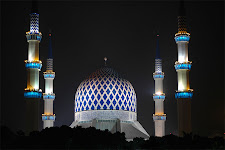






















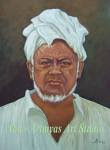



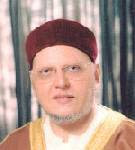



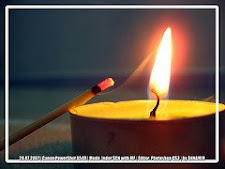




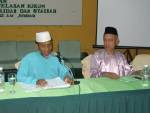



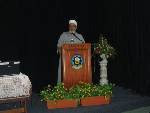



No comments:
Post a Comment